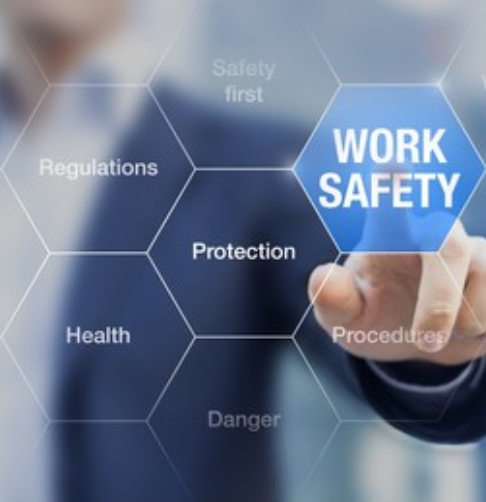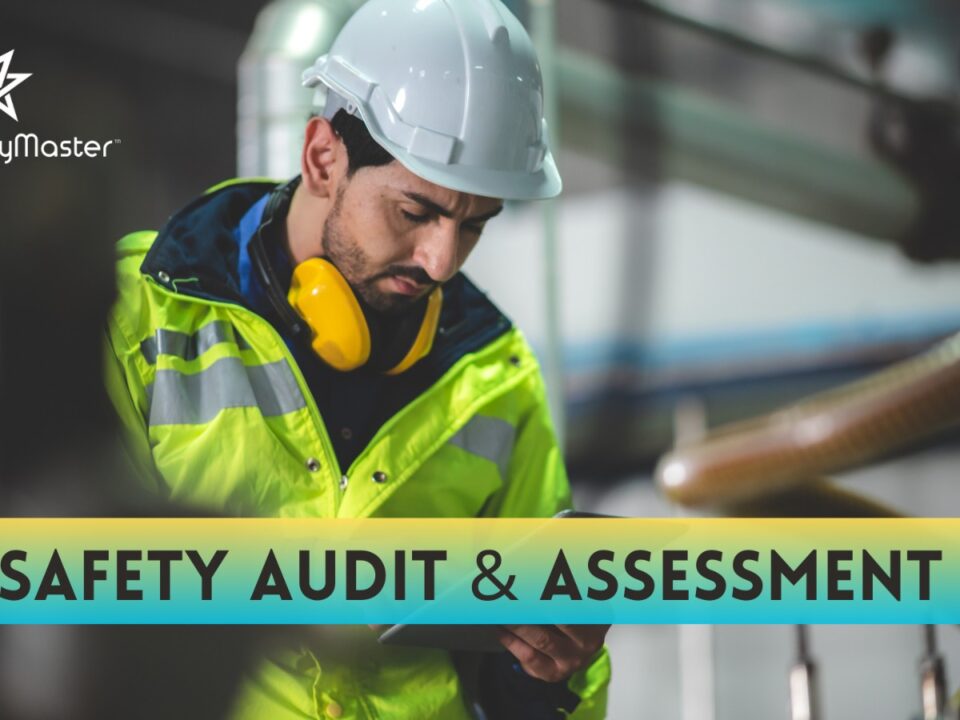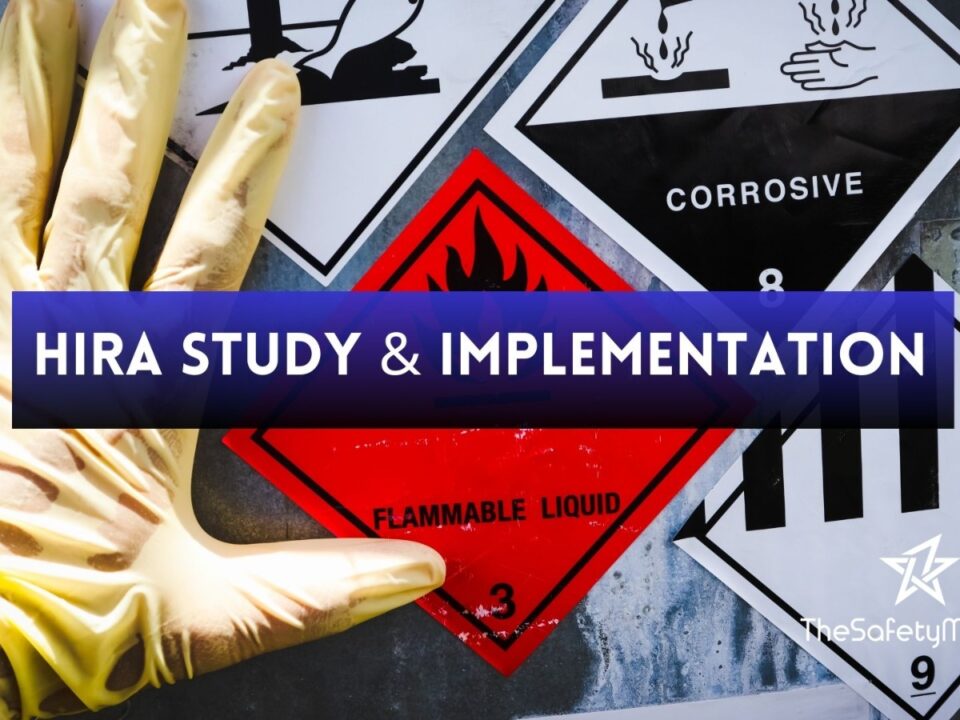Ensuring Safe Operations: Best Practices for Cryogenics Plant Safety

Ensuring Data Security and Compliance: A Comprehensive Safety Audit at Datacenters
July 25, 2023
Understanding the Risks and Precautions of Handling Hydrogen in Industrial Environments
July 25, 2023In the realm of modern science and technology, cryogenics has emerged as a groundbreaking field that holds immense potential for various industries. From medical research to energy production, the ability to manipulate materials at extremely low temperatures has revolutionized numerous processes. However, with this innovative power comes an inherent responsibility to ensure the safety of those involved in cryogenic plant operations.
In this article, we will delve into the vital topic of ensuring safe operations in cryogenics plants. We will explore best practices and discuss comprehensive safety measures that are crucial in mitigating potential hazards. By examining standard operating procedures, risk assessment techniques, emergency response plans, safety equipment requirements, personnel training programs, maintenance protocols, and collaborative efforts within the industry, we aim to equip readers with valuable insights and knowledge that can be applied in their own cryogenics plant settings.
The Crucial Role of Safety Measures in Cryogenics Plant Operations
When it comes to cryogenics plant operations, safety is not merely a priority, but an absolute necessity. The intricate and intense nature of working with cryogenic materials demands comprehensive safety measures to protect the well-being of both personnel and the environment.
Cryogenics involves the handling and storage of substances at extremely low temperatures, often below -150 degrees Celsius. The potential risks associated with such conditions cannot be understated. From the hazards posed by the extreme cold to the potential for leaks or explosions, every aspect of cryogenics plant operations must be meticulously planned and executed with safety at its core.
Setting the Foundation: Standard Operating Procedures for Cryogenics SafetySetting the Foundation: Standard Operating Procedures for Cryogenics Safety
In the realm of cryogenics, where temperatures plummet to astonishingly low levels, establishing a robust set of standard operating procedures (SOPs) is paramount to ensure safety in plant operations. These SOPs serve as a solid foundation upon which all other safety measures are built, outlining step-by-step instructions and guidelines that minimize risks and maximize efficiency.
Creating comprehensive SOPs requires meticulous attention to detail. It involves analyzing every aspect of cryogenic processes, from the handling and storage of cryogens to maintenance protocols and emergency response plans. By mapping out these procedures, organizations can proactively address potential hazards and implement controls that ensure a safe working environment for all personnel involved.
Identifying Potential Hazards: A Holistic Approach to Risk Assessment
When it comes to ensuring safety in cryogenics plant operations, a comprehensive risk assessment is an essential component. By employing a holistic approach, potential hazards can be identified and mitigated, minimizing the risks associated with cryogenic processes. This approach involves scrutinizing various aspects of the plant’s operations, including equipment, processes, and human factors.
To begin with, assessing equipment-related hazards is crucial. From storage vessels to pipelines and valves, each component must be meticulously examined for potential weaknesses or vulnerabilities that could result in leaks or other malfunctions. Additionally, attention must be given to the materials used in construction and their compatibility with cryogenic temperatures.
The Power of Preparedness: Developing Emergency Response Plans
In the world of cryogenics, where extreme cold temperatures pose unique safety challenges, being prepared for emergencies is of paramount importance. Developing comprehensive emergency response plans is a crucial step towards ensuring the safety of personnel and protecting sensitive equipment.
An effective emergency response plan begins with a detailed analysis of potential risks and hazards associated with cryogenics operations. This includes identifying scenarios such as leaks, system failures, or accidental spills that could lead to serious incidents. By assessing these risks, plant operators can devise strategies to mitigate them and establish protocols for prompt and efficient response.
Emergency response plans should encompass clear communication channels to quickly alert personnel in case of an emergency. It should outline the roles and responsibilities of each team member, ensuring everyone is aware of their duties and knows how to act swiftly yet safely during high-stress situations. Regular drills and simulations help familiarize staff with these procedures, boosting their confidence and enabling them to respond effectively when faced with real emergencies.
With a robust emergency response plan in place, cryogenics plants can not only minimize or prevent accidents but also demonstrate their commitment to safety. By proactively addressing potential hazards and equipping their teams with the tools they need to respond effectively, these plants pave the way for a safer future in cryogenic operations.
Protecting the Protectors: Safety Equipment and Personal Protective Gear
When it comes to ensuring the safety of personnel working in cryogenics plants, providing them with adequate safety equipment and personal protective gear is of paramount importance. These essential tools not only shield workers from potential hazards but also instill confidence and allow them to carry out their duties effectively.
The first line of defense against cryogenic dangers lies in the selection and provision of suitable safety equipment. This includes specialized gloves, face shields or goggles, aprons or coveralls, boots, and head protection. These items are carefully designed and rigorously tested to withstand extreme temperatures and provide resistance against potential leaks or spills.
Moreover, personal protective gear plays a crucial role in creating a sense of security among workers. By investing in high-quality equipment that fits properly and is comfortable to wear for extended periods, employers demonstrate their commitment to valuing their employees’ well-being.
Regular maintenance checks are vital to ensure that safety equipment remains in optimal condition. Additionally, ongoing training programs should be implemented to educate employees on proper usage guidelines as well as emphasizing the importance of wearing protective gear at all times.
By prioritizing the protection of those who work tirelessly within cryogenics plants, we not only enhance workplace safety but also cultivate a culture where employee welfare is cherished above all else.
Safety First: Training and Education for Cryogenics Plant Personnel
When it comes to ensuring safe operations in a cryogenics plant, there is no substitute for well-trained and knowledgeable personnel. The complex nature of working with extreme temperatures and hazardous materials demands a high level of expertise. Therefore, comprehensive training programs are essential in equipping employees with the necessary skills and knowledge to navigate potential risks effectively.
Training should cover various aspects, including but not limited to cryogenic substances, equipment operation, emergency response procedures, hazard identification, and personal protective measures. Personnel should undergo rigorous theoretical and practical training sessions conducted by experienced instructors who possess profound expertise in cryogenic plant safety.
Maintaining a Safe Environment: Cryogenics Plant Maintenance and Inspections
In the realm of cryogenics, where extreme temperatures and volatile substances are part of daily operations, maintaining a safe environment is paramount. Cryogenics plant maintenance and inspections play a vital role in ensuring the ongoing safety of both personnel and equipment. Regular inspections, conducted by trained professionals, allow for the identification and mitigation of potential hazards before they can escalate into dangerous situations.
During inspections, various aspects are carefully evaluated to guarantee that all safety measures are functioning optimally. This includes assessing the integrity of storage vessels and pipelines, checking for leaks or damage that could compromise containment systems, testing emergency shutdown systems for responsiveness, inspecting electrical equipment to prevent potential fire hazards, and scrutinizing ventilation systems to ensure proper air circulation.
Beyond Boundaries: Collaborating for Comprehensive Safety in the Cryogenics Industry
The pursuit of safety in the cryogenics industry extends beyond individual responsibility and isolated efforts. It requires a collective commitment to collaboration, knowledge sharing, and a united front against potential hazards. By establishing partnerships within the industry, stakeholders can work together to develop and implement best practices that elevate safety standards to new heights.
Collaboration within the cryogenics industry fosters an environment where innovative ideas flourish and information is exchanged freely. Companies can come together to form safety committees or working groups that focus on identifying common challenges and finding collective solutions. This collaborative approach not only leads to more effective safety protocols but also promotes a sense of camaraderie and shared responsibility among industry peers.
Inspiring a Culture of Safety: Recognizing and Celebrating Success Stories
Within the realm of cryogenics plant safety, fostering a culture of safety is paramount. It is essential to recognize and celebrate success stories that showcase outstanding safety practices. By doing so, organizations can inspire their workforce to continuously strive for excellence in maintaining a safe environment.
One notable success story revolves around the implementation of a comprehensive safety training program at a leading cryogenics facility. Through meticulous planning and diligent execution, the plant witnessed a significant reduction in accidents and near-misses. This achievement not only highlighted the effectiveness of the training but also demonstrated how investing in employee education can yield remarkable results. By celebrating this success, workers were motivated to actively engage in safety practices, fostering an environment where everyone felt empowered to contribute towards maintaining an exemplary level of safety.
Harnessing Innovation: New Technologies for Enhancing Cryogenics Plant Safety
In the fast-evolving landscape of cryogenics, where safety is paramount, innovation continuously pushes the boundaries of plant operations. With cutting-edge technologies emerging, cryogenics plant safety is taking a quantum leap forward. One such breakthrough technology that holds tremendous promise for enhancing safety is advanced process control systems.
These state-of-the-art systems utilize real-time data monitoring and analytics to provide operators with invaluable insights into plant operations. By constantly analyzing critical process parameters, such as temperature and pressure levels, these systems can detect anomalies and issue proactive alerts before potential hazards escalate into emergencies. This not only safeguards personnel and assets but also ensures uninterrupted production and minimal downtime – a win-win situation for both safety and productivity.
Conclusion: Pioneering a Safer Future in Cryogenics Operations
In conclusion, the pursuit of safe operations in cryogenics plants requires a comprehensive and multidimensional approach. By implementing standard operating procedures, conducting thorough risk assessments, and developing efficient emergency response plans, we can mitigate potential hazards and ensure the well-being of plant personnel. Equipping workers with state-of-the-art safety equipment and providing continuous training and education further enhance their ability to navigate the challenges inherent in this field. By fostering collaboration within the cryogenics industry and celebrating success stories, we can inspire a culture of safety that propels us towards a future where innovation meets unwavering dedication to protecting lives. As we continue to harness new technologies for enhancing cryogenics plant safety, we are confident that together, we can overcome any obstacle that arises on our path to pioneering a safer tomorrow.
With Best Wishes
Sanjeev Kumar Paruthi
Director & CEO
TSM TheSafetyMaster® Private Limited
Unit No 221-451-452, SPL1/J, 2nd & 4th Floor, Sunsquare Plaza Complex, RIICO Chowk, Bhiwadi 301019, Rajasthan, India
Phone: +91 1493 22 0093
Mobile: +91 7665231743/9413882016
Email: info@thesafetymaster.com



